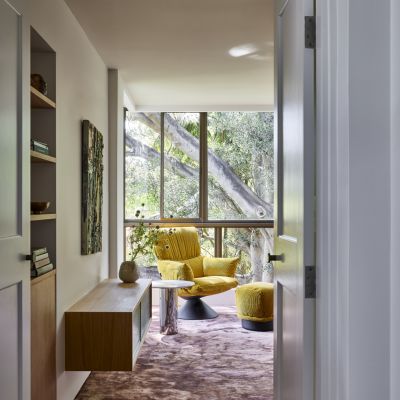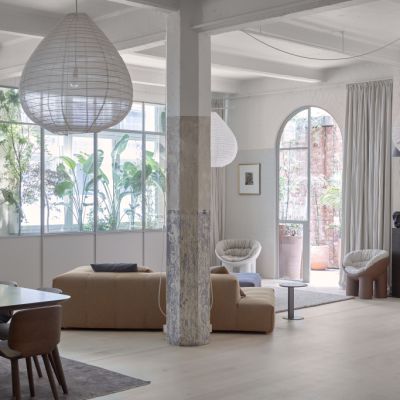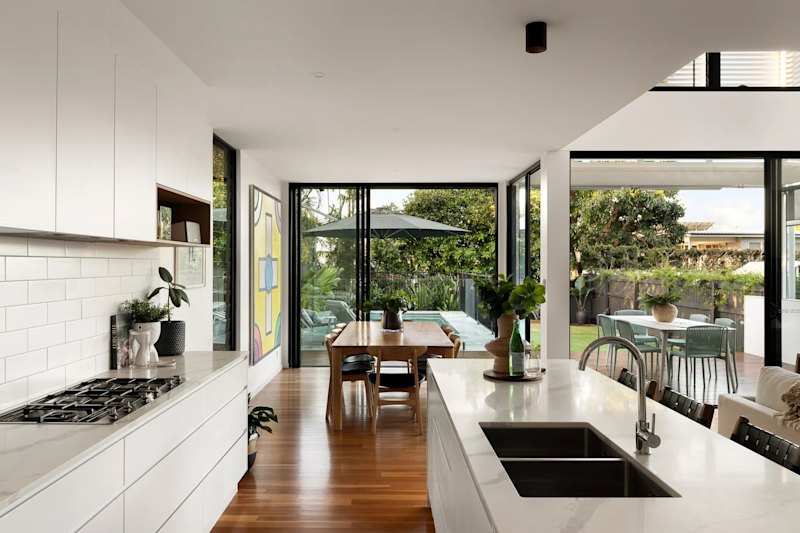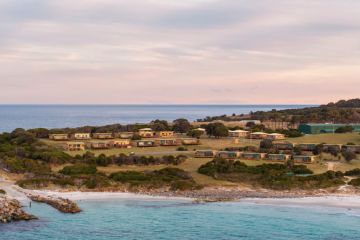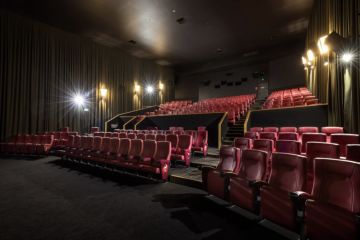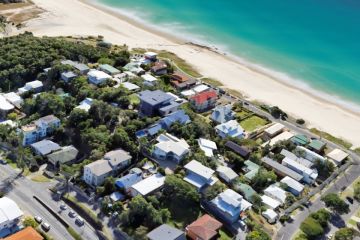There's more to this modern Mossy Point home than meets the eye
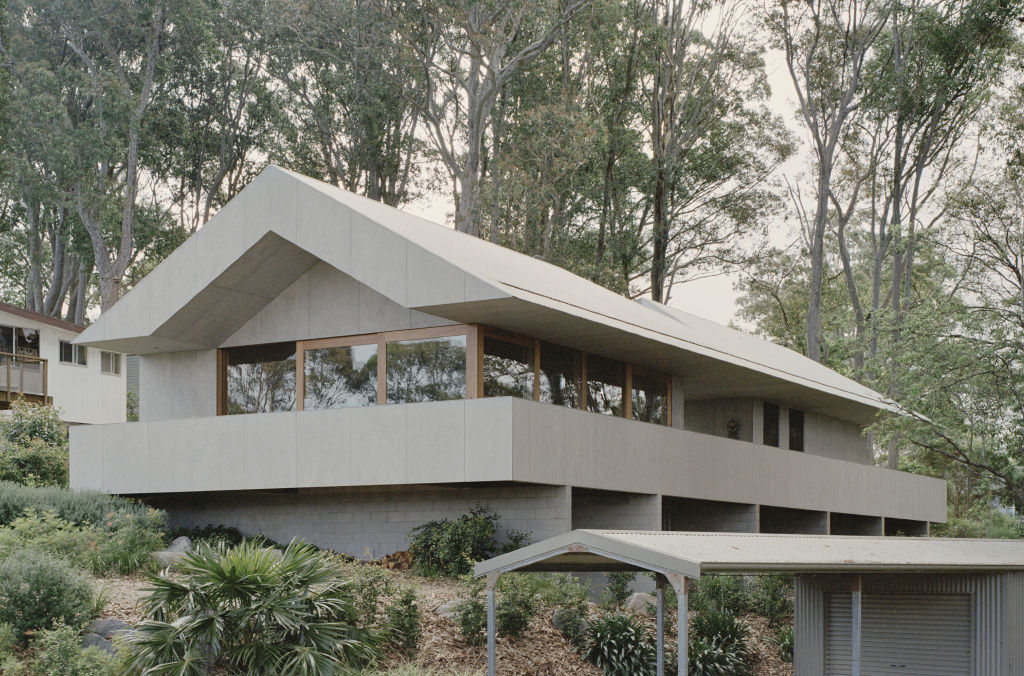
Pub rockers Hunters & Collectors sang “Do you see what I see?” back in the late 1980s. When it comes to an architect, you probably don’t.
What architects have in their mind’s eye when they design a building is likely at odds with what we see.
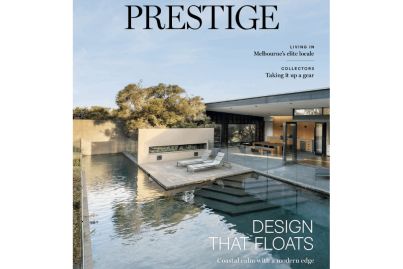

They have years of training and learned design principles. We have our emotions.
Take this 2022 three-bedroom residence – the work of Melbourne architect practice Edition Office – at Mossy Point, a secluded hamlet on the NSW South Coast.
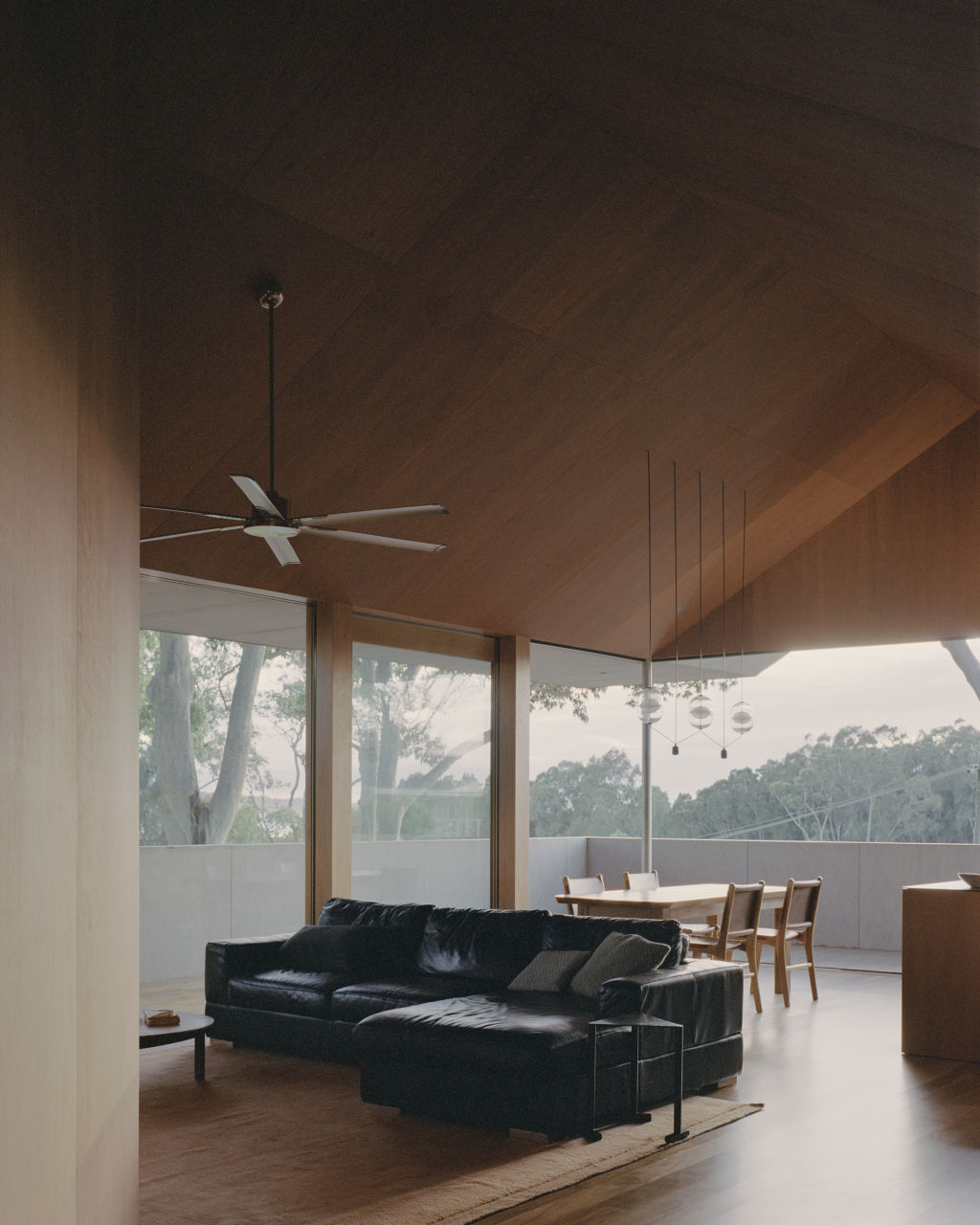
We see a bold-looking modern house nested between towering spotted gums, with a solid pitched roof (and with a curious notch) and a balcony framing dreamy bush views out across Tomaga River and Broulee Bay.
Edition Office co-director Kim Bridgland, on the other hand, sees a two-storey linear structure clad in a mottled grey Barestone – a durable fibre-cement panelling – which leads into the sharply sloping 917-square-metre block so as to blend in with other properties on the residential street.
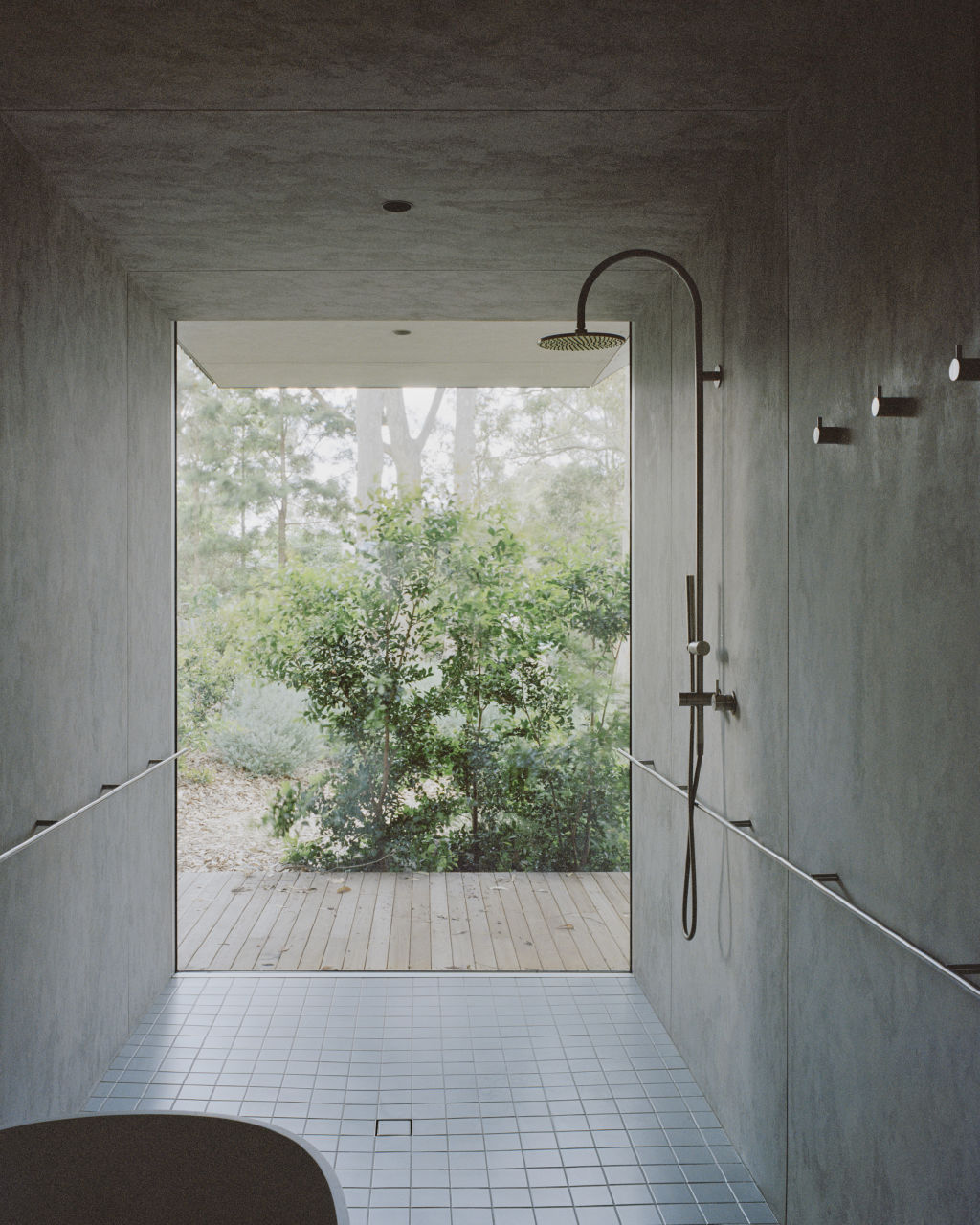
“There’s a sense of humility, of not trying to dominate the neighbourhood or the site,” Bridgland explains, pointing out that the house he designed for a family member deliberately appears as a single level from the street, concealing the lower-ground guest suite and storage.
At the same time, there’s an unintended hint of the early Aussie fibro beach shack “typology” in his design that’s both “familiar yet foreign”.
“We were just responding to the various levels of pragmatic, aesthetic and experiential constraints,” Bridgland says.
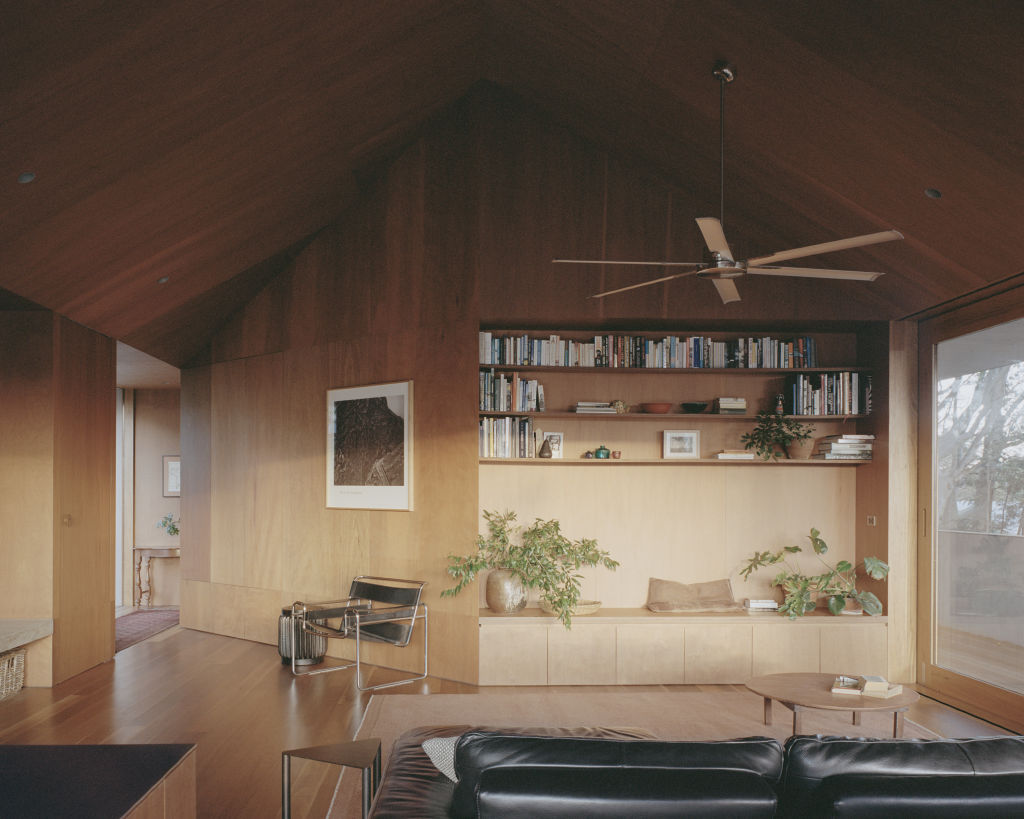
“Essentially, [it’s] the same wonderful Australian vernacular that created the simple beach shack. It’s what works here, what’s effective in a hard climate, what allows an intimate connection to the landscape.”
It’s not only the natural-looking monochromatic exterior finish that ties the property to the land; the spotted-gum interiors have a similarly single tone.
There are russet and amber-coloured timber floors throughout and detailed joinery crafted from industrial-grade plywood.
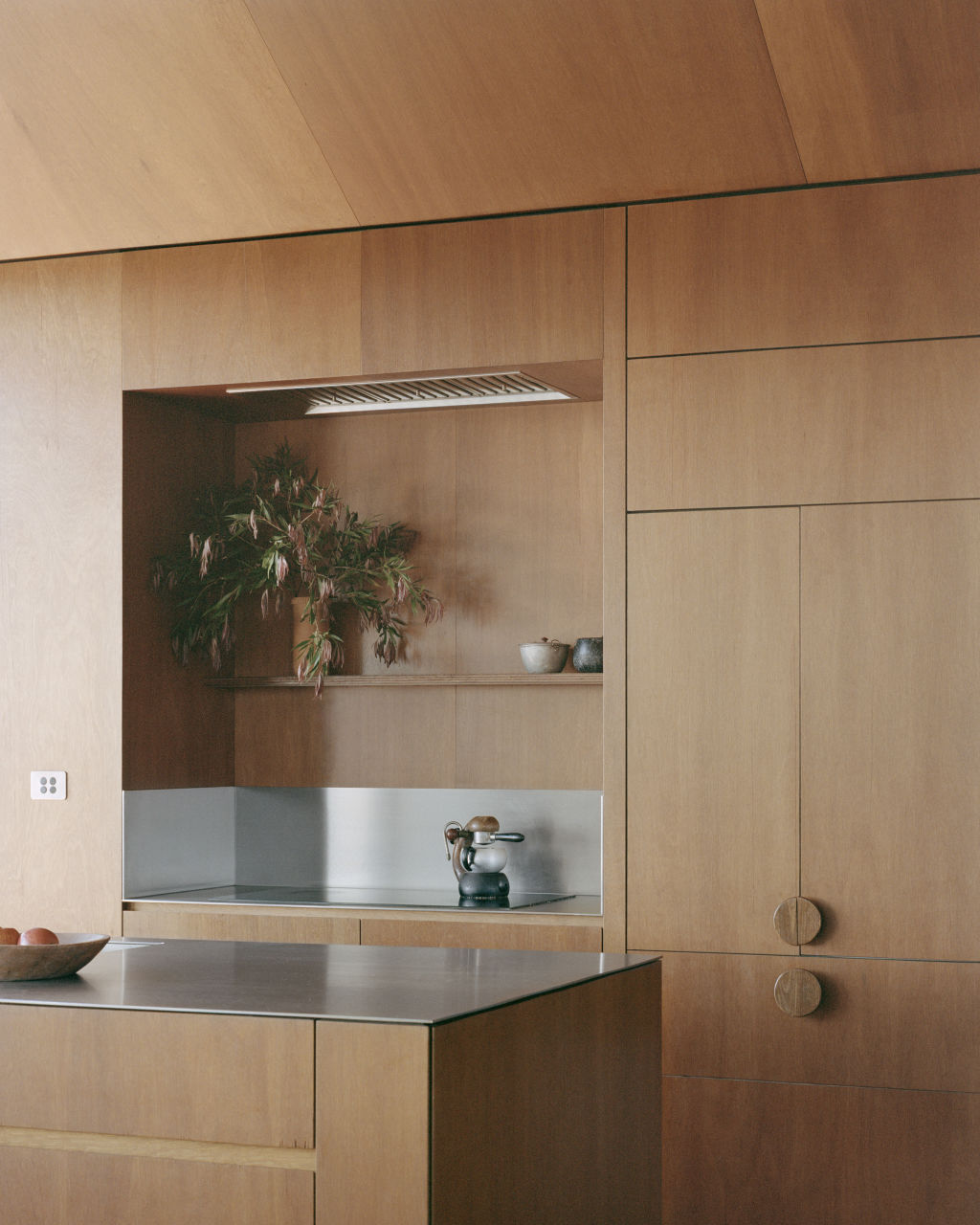
Which prompts me to imagine a felled gum: the long trunk of the house lies flat in the bush, its smooth, spotty skin mimicking the silvery bark, while the uniform character of the warm timber tones inside forms the guts of the tree.
“That wasn’t our conceptual agenda but I like the way we all bring our responses, understandings and way we see things,” Bridgland says, reminding me his house plan is born from capturing the rhythms of the street, the natural light and views.
“The design allows for calm, to be in the moment,” he says.
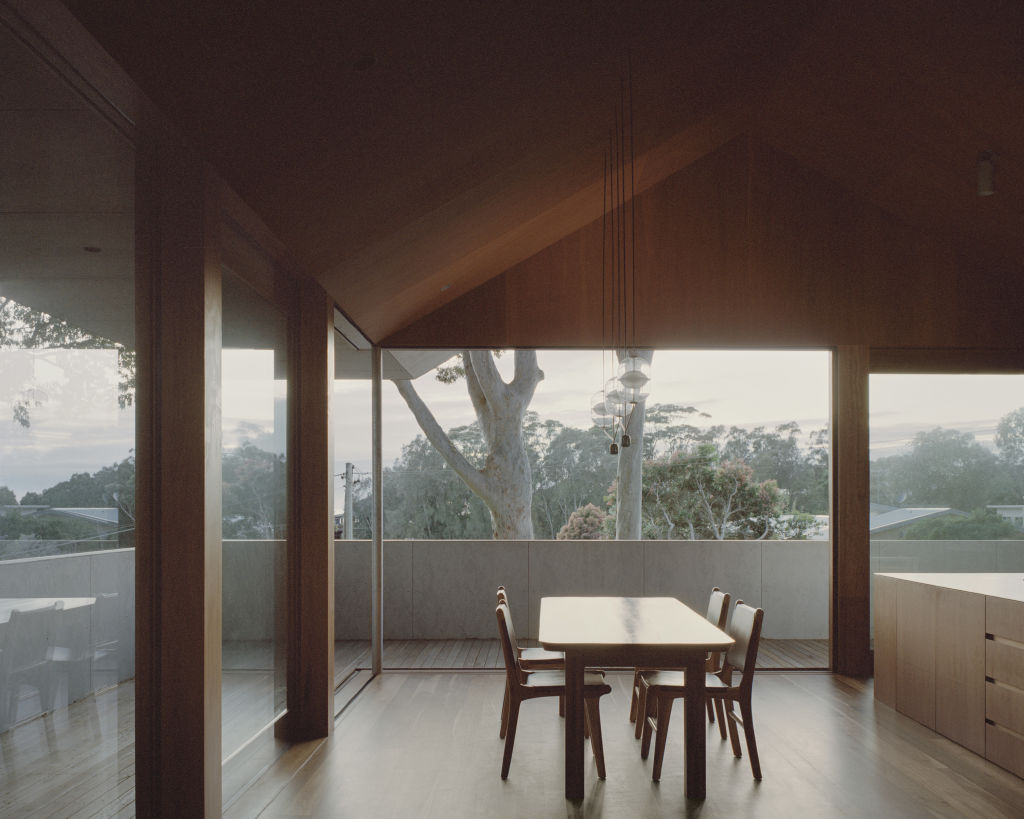
The architect’s vision is there to see again the second you step inside. Rather than a hallway, you immediately confront a keenly angled wall that demarcates the house into two symmetrical wings.
To the right is the social side: a big, breezy open-volume space, with living, dining and kitchen areas under raked five-metre ceilings.
The covered deck wraps around to a street-facing porch, encouraging conversation with neighbours and passers-by.
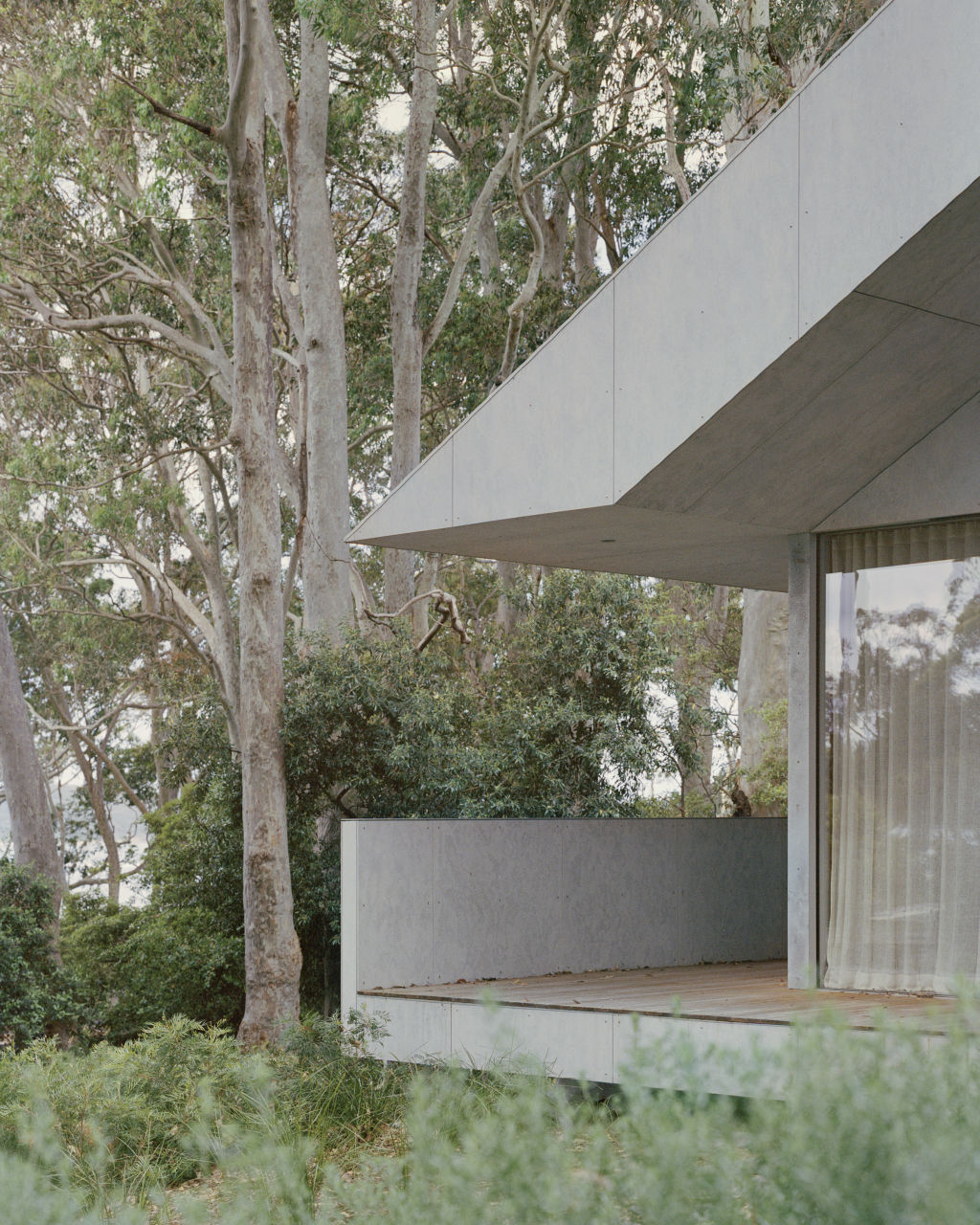
The left wing is the private half of the house: separate snug studies, identical twin bedrooms, a bathroom and a laundry.
Not that we see it entirely the way Bridgland does. This wedge-shaped entry also directs natural light from both the north and south.
“You get this beautiful softness from both sides,” he explains. “It also means little hallway [so] we could compress the house’s volume, lowering [building] costs.”

It’s part of a larger curious design feature: a diamond-shaped void mid-house (which we see as a notch in the roofline) accommodates an outdoor dining room, with a tree-fern garden.
From above, one may even make out an open bird’s beak. Which works nicely with the idea that the house has wings. But that’s my thought, not the architect’s.
For Bridgland, the diamond cutout serves as a fulcrum around which the house’s social and private halves pivot.
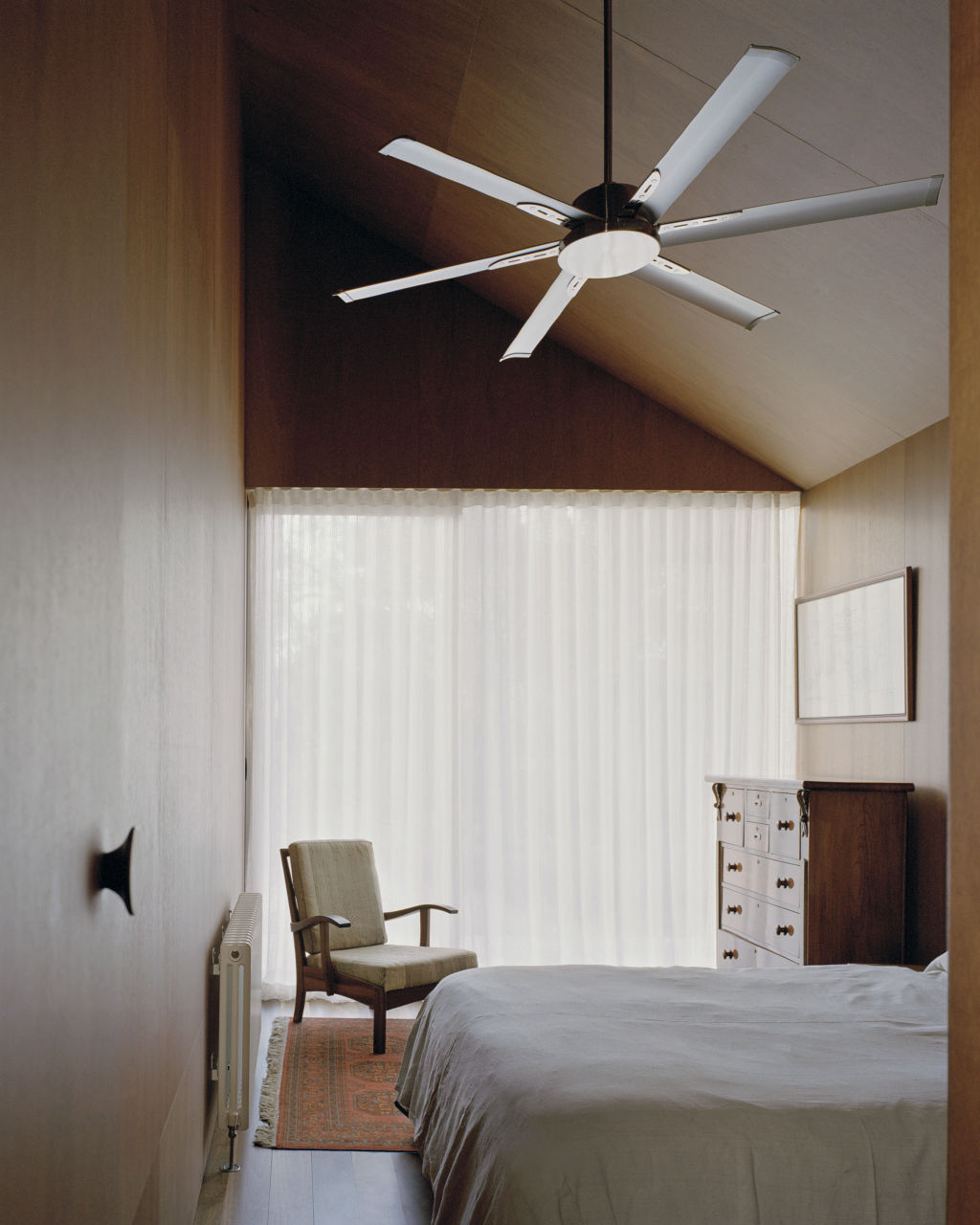
“The void makes a big difference,” he says. “It unlocks everything. It lets in a more intriguing quality of light. It shapes the view out and connection to the sky and draws the garden into the middle of the house.”
Bridgland says it also creates a more dynamic internal living space, with its sharply angled geometry and barn-like ridges: “It forces you to witness [the house] a bit more.”
Perhaps we do see what you see.
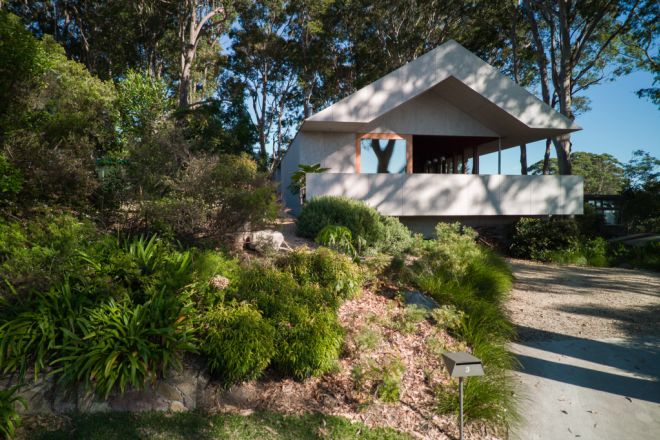
Price guide: $3.6 million-$3.9 million
Agent: Modern House, Marcus Lloyd-Jones 0424 005 531
“There’s this amazing interaction between the trees and the house. The trees provide the house with intimacy and more privacy, dictate views to the water and offer shade. They help make the house work,” says agent Marcus Lloyd-Jones from Modern House.
We recommend
We thought you might like
States
Capital Cities
Capital Cities - Rentals
Popular Areas
Allhomes
More
